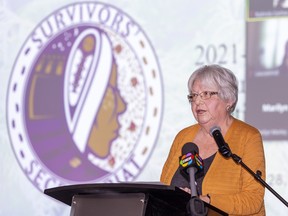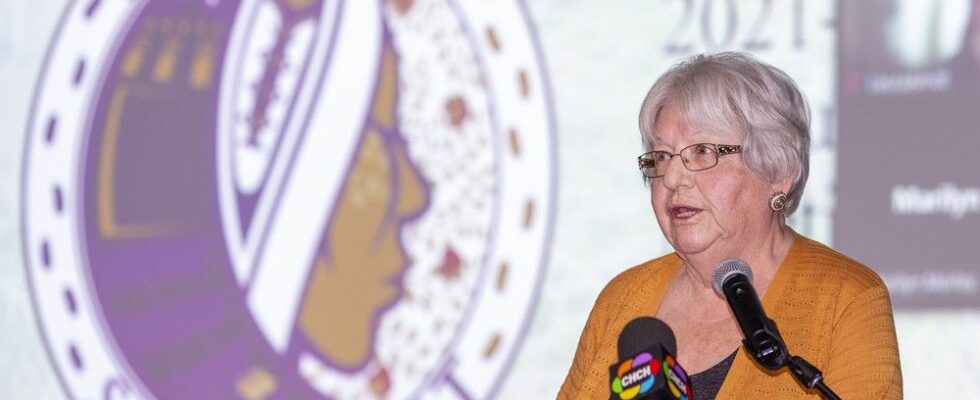
The Survivor’s Secretariat announced Tuesday that the investigation into unmarked burial sites and missing children at the Mohawk Institute in Brantford is shifting from a criminal investigation to one led by the Office of the Chief Coroner.
“A coroner-led investigation differs as its focus is on the victim rather than the culprit,” said Laura Arndt, chief operating officer, at the secretariat’s annual general meeting. “This will provide the secretariat with more access to the uncovered data and will allow for more resource sharing amongst the investigators and archival researchers.”
Evidence discovered would no longer be viewed as protected under an active criminal investigation and would provide the opportunity for relatives of victims to review files pertaining to their families, she said.
“Our office, and my role, is to support the secretariat in whatever way the secretariat chooses,” said Mark Mackisoc, team leader for the Residential Schools Death Investigation Team at the Office of the Chief Coroner and Ontario Forensic Pathology Service.
Efforts are made to determine who died, when and where they died, the cause of death, and whether it was by natural causes, accidental, or otherwise, he said.
“The goal is to make sure no death is overlooked, ignored, or concealed.” Mackisoc said. “I think we can all agree that with the history of residential schools, all three of those things have occurred.”
The National Center for Truth and Reconciliation reported 426 deaths at residential schools in Ontario. Mackisoc noted that figure has been recently updated to 433.
Following the discovery in May 2021 of more than 200 potential child burials at the former Kamloops Indian Residential School in British Columbia, survivors of the Mohawk Institute began to meet to discuss how a search could be conducted of the 600 acres at the former residential school in Brantford.
Six Nations of the Grand River provided $1 million in interim funding in July 2021 for the creation of the Survivor’s Secretariat that became incorporated in November of that year.
Ground penetrating radar machines were purchased, and a police task force led by Six Nations Police was formed with assistance from OPP and Brantford Police.
Directed by survivors to focus on the ground search and document collection, the secretariat hired Know History Historical Services to begin archival research of documents housed in various locations across the country from governments, churches and institutions known to be involved in the operation of the Mohawk Institute .
Arndt said that $10.3 million in federal funding and $1 million from the province is insufficient as the work ahead is likely to take a minimum of 10 years.
“Nobody in this world, in Canada, has suffered like the kids at the residential schools,” said Geronimo Henry of Six Nations, who spent 11 years at the Mohawk Institute. “They tried to assimilate me into the white-dominant society.”
Henry told those in attendance that many Indigenous children sent to the Mohawk Institute were already attending Christian churches, but his experiences were harder because he was a traditional person.
“I think the ones hit the hardest were the traditional people that didn’t want to give up their language, culture, and beliefs,” he said. “We should get some kind of justice and reconciliation from all the atrocities that we suffered at the schools.”

Comments
Postmedia is committed to maintaining a lively but civil forum for discussion and encourages all readers to share their views on our articles. Comments may take up to an hour for moderation before appearing on the site. We ask you to keep your comments relevant and respectful. We have enabled email notifications—you will now receive an email if you receive a reply to your comment, there is an update to a comment thread you follow or if a user you follow comments. Visit our Community Guidelines for more information and details on how to adjust your email settings.
Join the Conversation